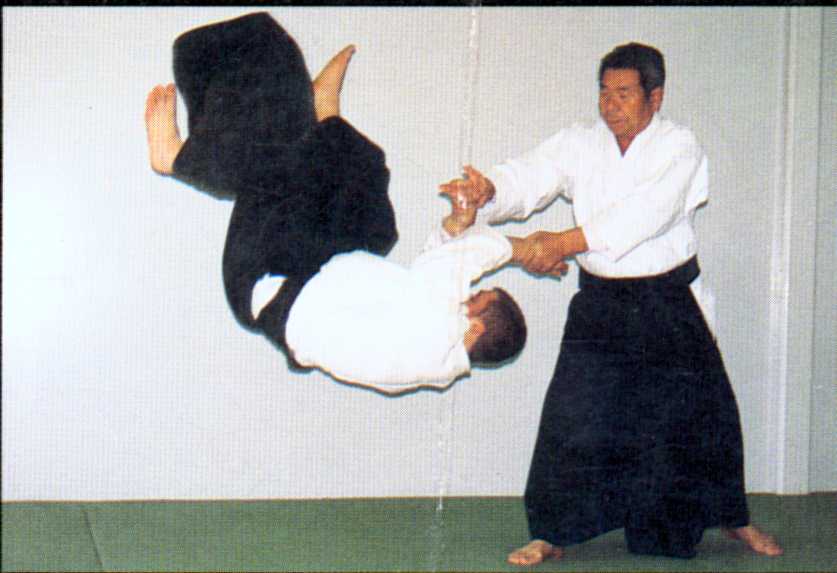Aikido

PRACTICES
Generally, it is a martial art that uses no weapons or special
equipment. It helps promote discipline and a non-violent outlook
on life, and it improves students' reactions to any kind of situation
or environment. The self defense movements cause no injury because
they advocate proper stretching, body alignment and posture. By
bringing an aggressor into his/her own circle, an aikido martial
arts student learns how to foster the opponent's force into his/her
own, thereby gaining control of the fight.
A gradual progression takes place when teaching this self defense
martial art to the beginning student. Initially, the fundamentals,
such as how to break a fall, are introduced. The martial art techniques
practiced are meant to help the learner improve his/her breathing,
flexibility and stamina. Later on, as the martial arts student
progresses in this martial art, there is more focus on looking
into one's self. The self defense students must become attuned
to nature and its relevance to the human world, and by using nature,
they gain insight into their own selves.
In addition, aikido does not have any formal contest or self defense
competitions. This is how founder Ueshiba wanted it. He did not
want competition because the goal of this martial art is to win
over one's own internal fears and weaknesses, rather than just
beating someone in a meaningless game. Even though competition
is banned in traditional aikido, this sport has been called (by
Ueshiba himself) "shiai," or "an encounter with
death." Martial arts students are always working with moves
that can be deadly. Therefore, when going through this self defense
training, intense concentration is needed.
An equal opportunity aspect of this martial art is that everyone
trains together. There is no division between men and women, experienced
and inexperienced or small and big. All self defense martial arts
students train together so that everyone can learn from each other.
This also teaches martial arts students a life lesson: how to
get along with a group of different people.
There are no physical limitations to aikido. Because its form
is so flexible, different self defense martial arts techniques
can be tailored to people who might have physical impairments.
As Ueshiba himself said, "Aikido has no end-there's just
the beginning and further growth."
IN ACTION
Ueshiba learned to harness the power of ki so well, that he began
to be known as a martial arts legend when he was in his late eighties.
During a self defense martial arts demonstration, Ueshiba stepped
in front of about 25 or so news men, and drew a circle around
his feet. He then asked six volunteers to attack him, all at once.
When the men came forward to attack and accost him, Ueshiba repelled
his attackers and sent them flying.
When looking down at the position of his feet in relation to the
circle, he had not moved. He was trying to prove the point to
the media that minimal movement is needed in this martial art
when one has learned to control the ki within him/her.
Another story tells of Ueshiba standing in front of cameras, asking
four men to lift him up from the ground. At this time, he was
still in his eighties, and still a very light man (probably less
than 120 pounds). When the men approached him to try and lift
him, Ueshiba redirected his ki downward, toward the ground. Consequently,
the men could not lift him up.





